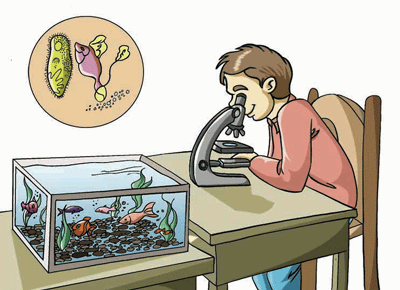zoo-, zoa-, zo-, -zoic, -zoid, -zoite, -zoal, -zonal, -zooid, -zoon, -zoa, -zoan
(Greek: animal, animals; living beings; life)
The Mollusca is Huxley's term for the series of animals from the lowest Polyzoa to the highest molluscs.
Merozoites are released and invade other cells.
The Mesozoa constitute the small phylum of ciliated worms, which are endoparasitic in marine invertebrates.
The small phylum of ciliated, multicellular animals are found as endoparasites (parasites living in the internal organs of animals) in various marine invertebrates.
They are characterized by having a solid, two-layered body lacking skeletal, muscular, nervous, digestive, and excretory elements.
They are all obligate parasites and their simple organization may be secondary, a result of parasitic adaptation and they are found on both sides of the Atlantic, and on the west coast of America.
The Mesozoic is divided into three time periods: the Triassic (245-208 Million Years Ago), the Jurassic (208-146 Million Years Ago), and the Cretaceous (146-65 Million Years Ago).
The Mesozoic occurred before the Cenozoic and after the Palaeozoic periods and was marked by the development of the ancestors of the major plant and animal groups that exist today and the extinction of the dinosaur that suddenly occurred at the end of the Cretaceous period.
Mesozoic means "middle animals", and is the time during which the world fauna changed drastically from that which had been seen in the Paleozoic.
Dinosaurs, which are perhaps the most popular organisms of the Mesozoic, evolved in the Triassic, but were not very diverse until the Jurassic. Except for birds, dinosaurs became extinct at the end of the Cretaceous period. Some of the last dinosaurs to have lived are found in the late Cretaceous deposits of Montana in the United States.
The Mesozoic was also a time of great change with terrestrial vegetation. The early Mesozoic was dominated by ferns, cycads, ginkgophytes, bennettitaleans, and other unusual plants. Modern gymnosperms, such as conifers, first appeared in their current recognizable forms in the early Triassic.
By the middle of the Cretaceous period, the earliest angiosperms had appeared and began to diversify, largely taking over from the other plant groups.

They should not be confused with true molds, which are actually fungi. Although cosmopolitan in distribution, they are usually small and rarely noticed. There are several different groups.


